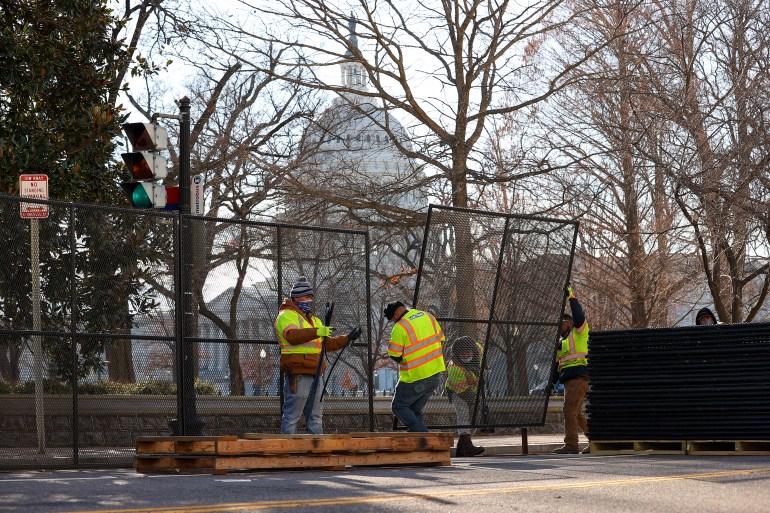Companies across the United States are struggling to find enough employees to meet their needs, and the only solution to this dilemma is to bring in more foreign workers.
In a report published by the American "Vox" website, writer Nicole Naria said that the United States needs nearly 10 million highly skilled and low-wage people to fill the labor shortage.
Although job increases reached historic levels in July, and unemployment benefits were ended in September, Americans are not returning to work, particularly in low-wage industries that set record numbers of employees quitting.
The writer mentioned that the US authorities usually resort to closing the borders to protect American workers when the economy is fragile, and this is what happened during the epidemic, as the authorities closed the southern borders to immigrants, asylum seekers and even to legal immigration requests.
Overall, economic research has shown that the influx of low-wage foreign workers has almost no negative impact on the wages or employment pattern of American workers.
Under the current circumstances, welcoming more low-wage foreign workers would fill severe labor shortages in certain industries, which would help hard-hit areas of the country recover and avoid rising inflation.
Among the industries currently facing the worst labor shortages are construction, transportation, warehousing, hospitality, and personal services such as salons and laundries, repair services and contractors.
According to official figures, immigrants represent about a quarter of workers in the construction sector, but this number is likely underestimated, because many construction workers work without contracts.
For many who worked before the pandemic in undesirable or low-paying jobs, a recovering economy and an abundance of job opportunities meant gaining greater bargaining power and improving working conditions, but economists warn that a severe labor shortage could threaten overall economic growth, It may lead to higher inflation.
The writer pointed out that the federal government cannot force people to work, but it can facilitate immigrants' access to needed jobs, thus avoiding economic problems on their way out of the recession caused by the pandemic.
The pandemic has had a limited negative impact on the growth of industries that often depend on highly skilled foreign workers (Anatolia)
Bring more foreign workers
The economic recovery from the epidemic has been uneven in terms of income levels and geography, with states that depend on tourism being hit hard, while others are slowly recovering due to lack of labor.
Skilled industries, from healthcare to technology, have long been underemployed, hampering economic growth and innovation.
In general, immigrant workers who specialize in these sectors have a greater potential to compete with American workers than do low-wage workers.
During the pandemic, the demand for highly skilled workers has continued, with a report by the New American Economy in June finding that employers demanded foreign workers specializing in computer and math fields at a slightly higher rate than usual.
“The pandemic has had a limited negative impact on the growth of industries that often depend on highly skilled foreign workers, due to their chronic labor shortages, and the failure to enable employers to fill critical gaps in the workforce hinders their ability to realize their potential,” the report says. economy, which hinders economic growth at the national level.
The author reported that the United States needs approximately 10 million low-wage workers and high-skilled workers, to fill the national workforce shortage, and immigrants are willing to work in these jobs, and go where there are jobs, and are ready to do it now .
The arrival of immigrants to the United States would solve the problem of labor shortages that Americans could not fix themselves, and speed up the country's economic recovery process, but the only factor preventing this is US policy.
Recruitment of workers
Among the few visa programs designed to bring in low-wage foreign workers is the H-2 program, which allows employers to hire seasonal workers in industries such as tourism and fishing, and annually allows this program to bring in a maximum of 66,000 foreign workers on a temporary visa. , except for agricultural workers.
The Department of Homeland Security can provide 64,000 additional visas annually without any action from Congress, and the Biden administration made 22,000 additional visas available earlier this year, and could add more in the future.
But there are some limitations to this program, although it helps companies meet the demand for labor in peak periods, many industries suffer from labor shortages all year round, and immigrants are granted a temporary visa to work in the United States legally, while there are no guarantees for their long-term stay in the country.
The writer indicated that the Biden administration should reopen consulates that are still closed or provide limited services due to the pandemic, to ensure that immigrants are interviewed and their demands are considered in a timely manner, and this will help expedite the consideration of the long-backlogged visa and permanent residence demands.
Doing so would likely require additional funding for the State Department and USCIS prioritization of visas and permanent residency demands.
The writer stated that the steps that the Biden administration can take unilaterally are limited, and until the level of immigration increases than it was before the pandemic and under former President Donald Trump, Congress must take the necessary measures.

